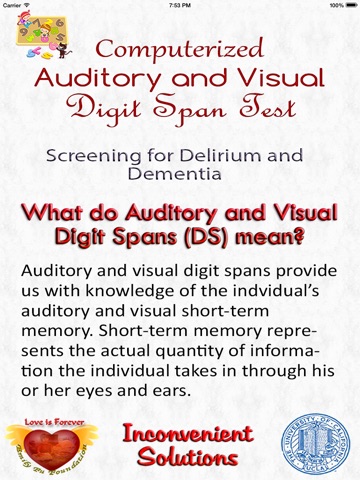

Everyday listening commonly occurs in the context of acoustic challenges that de-grade speech. Adaptive tests also help to avoid ceiling effects. This will help in identifying the 50% correct point quickly and reliably as it does not require as many test items for obtaining the final score. However, both tests converge to find a SNR value where a SRT of 50% is reached. The Hearing in Noise Test, on the other hand, adaptively changes the speech level while keeping the noise level fixed. For example, the QuickSin test fixes the speech level and adaptively changes the noise level. Either the speech or noise level is adaptively changed whilst the other is fixed. In an adaptive test, testing is conducted to approximate the SNR needed for 50% speech recognition. The result is displayed as percentage correct, making it easy to deliver the results to the patient. In fixed tests, the signal-to-noise ratio (SNR) is fixed, as the speech signal is presented at one level, and the noise is presented at another level. Speech-in-noise tests can be classified as either fixed or adaptive. Speech-in-noise testing is useful in the selection of amplification devices, the determination of patient expectations and as an outcome measure in the management of hearing loss.
#Auditory digit span test online professional
This is also recommended by professional audiology organisations. Testing in noise approximates a more realistic environment and helps to avoid ceiling effects, which are more common when testing in quiet. Implications for post Universal Newborn Hearing Screening using these tools are addressed.Ĭurrently, the clinical assessment of speech intelligibility commonly includes testing both in quiet and in noise since scores cannot be predicted based on an audiogram, and word recognition in quiet does not predict scores in noise. Thresholds of 10-year-olds and adults were similar in both the quiet and high frequency versions. An approximate difference of 10 dB was also noted between 4-year-old and 10-year-old children in AAST in quiet. This was evident across the three test settings.

The Maltese version of AAST confirms an age dependent norm threshold with a significant improvement in threshold being observed as children grow older, similar to other AAST versions. The aims were to determine the norms in these three settings in adults and children aged 4 years and older. The Maltese version of the Adaptive Auditory Speech Test (AAST) was developed to examine the speech recognition skills of 208 children and 40 Maltese-speaking adults in quiet, noise and high frequency. AAST is an interlingually valid and reliable standardised tool with speech material developed in several languages. The Adaptive Auditory Speech Test (AAST) was developed to record the Speech Recognition Threshold (SRT) in children in quiet or with background noise.


 0 kommentar(er)
0 kommentar(er)
